Creating a stink
This week: ; Creating a stink; Sweet smell of success; It starts with a cardboard box: Opening the box; Ground cover; This week’s harvest;
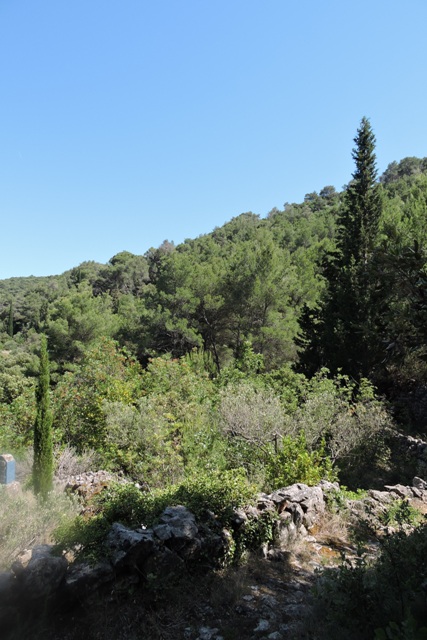
I had a very pleasant day on Sunday, starting with Church in Stari Grad.

The Parish Church of St. Stephen is the largest Church in the town and sits on a square with the same name, in the Roman heart of Stari Grad.

Inside it was standing room only for the confirmation service of a group of the towns youngsters, my friend’s son Cvjetko being one of them.

One of the things that I found a little strange when I moved here was how names run in families, so Grandfather, Father and Son are all called Cvjetko.
From the church we moved to a restaurant in Dol for a long lunch. Throughout I was taking family photographs. I am going to burn these, together with some videos, to a presentation DVD.

I’ve been to the vets again this week.
This time it’s with Argen. He had been off colour for a few days and when I picked him up on Monday and felt his ears, he had a temperature. Monday was a public holiday here, so everything was closed.
On Tuesday we were at the surgery when it opened. I did say that it was at least three months since my last visit so I thought I would check and see how everyone there was….
His temperature was 40.7ºC, which for a cat who like us has a normal temperature of 37.5º, it was not good.
All the blood tests were negative, which was good in that it’s not a major infection, cancer or worse. But it didn’t help with the diagnostics. In the end the thought was it could be parasites, perhaps from Ticks, of which there are huge numbers this year, or may be fleas.
Anyway, he had antibiotic and antiparasitic injections and came home. I also came home with a new thermometer, specifically for taking feline temperatures! I must remember which one is which.
He decided he didn’t like his bed and carefully moved spice jars to make room on top of the microwave.
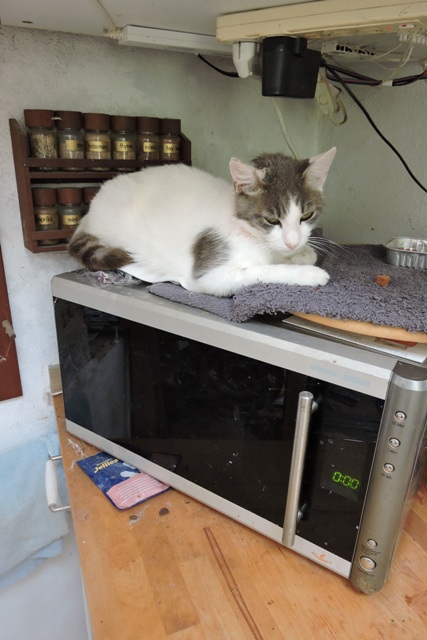
After moving him twice, I gave up and just cleared everything out of the way. It’s a good job I have a second microwave as this one may be out of use for a while.
By this weekend, he is a bit better, apart from a new head injury which looks as though he has had a close encounter with the village bully…. I’ve been treating it with Hibiscrub, my go-to antiseptic.
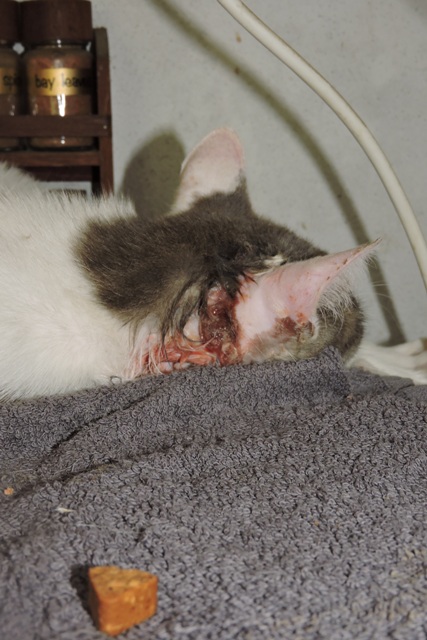
Felines are wonderful, aren’t they?!
Creating a stink
I woke up on Friday to a real stink. The Dragon Arum, or Vampire Lily flower has opened.
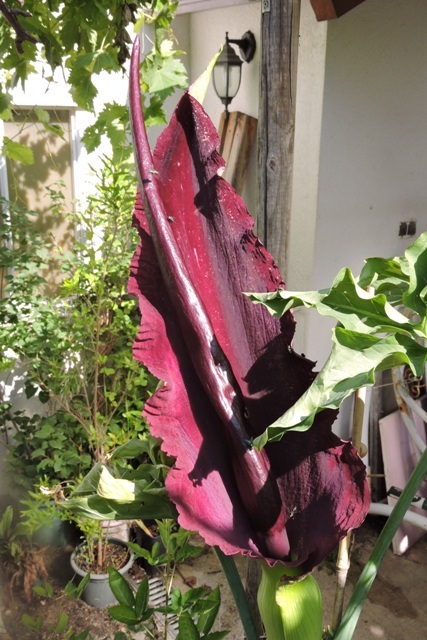
I have several of these Balkan and east-central Mediterranean natives, but this is the largest of my plants.
The flower spathe is 60cm long and on top of the stem length, makes it almost 1.5 meters tall.
The Dragon Arum flower smells strongly of dead meat, like a decomposing dead animal. It uses the odour to attract the flies which are its pollinators.
The flower only stays open for around 36 hours.
The flies go down into the almost closed green cup at the base of the flower, following the smell and get coated in pollen. It is not insectivorous, like the Venus Flytrap, but releases the flies once pollination has taken place.
It is worth the appalling smell for the spectacle of the flowers at this time of year.
Sweet smell of success
At the other end of the scale are my Jasmine plants.
Sitting on the link between my buildings, in a very large clay plant pot I have a white Jasmine.
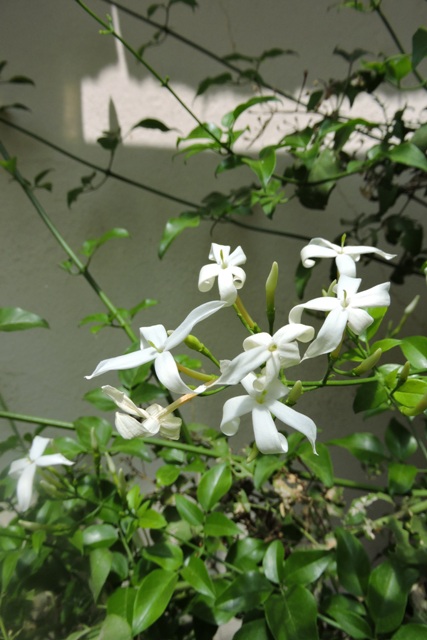
At the moment the sweet scent is wafting through the house, because with all the doors and windows open, but protected with mosquito screens, there is a constant throughflow of air.
My neighbours comment that the scent spreads beyond my boundaries.
It is another plant that I want to put into the courtyard, however, I just need the courtyard to be finished first! However that is a story for another day.
Meanwhile the Jasmine continues to grow and spread. It is a climbing plant, with nowhere to climb, so I have a support structure of canes for it to entwine itself around.
I give it a little help now and then, directing new shoots to where they can spread unhindered.
At the start of June the first flowers open and their scent fills the air. With water and plant food, it will continue flowering until September.
Alongside the orchard wall I have planted a red flowered Jasmine, Jasminium Beesianum.
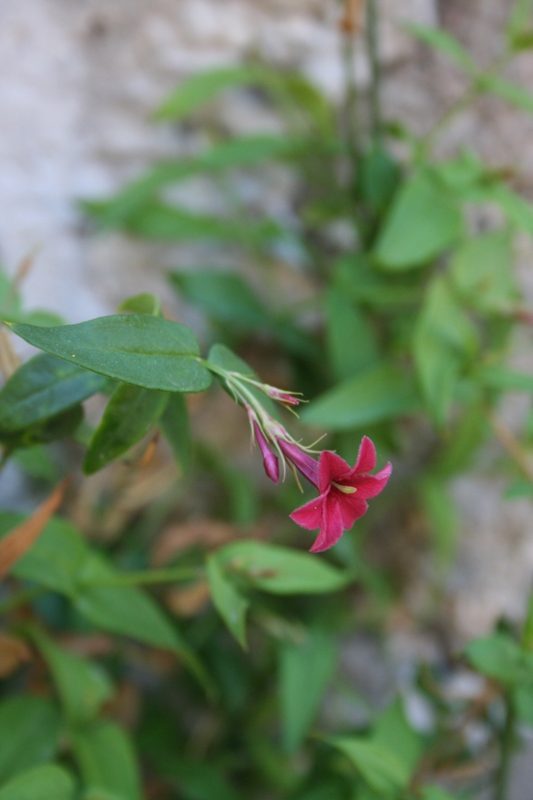
The scent is not as pronounced and the deep red flowers are small when compared to their white cousins. It is another climber, but here at least it can almost be described as a weed.
Everywhere that a shoot touched the soil, it roots. That means it is great to give away as gifts, with a health warning that if left to its own devices, it will become an invasive species.
It starts with a cardboard box
I was stung by a recent comment from an acquaintance; “Just look at all those weeds. Don’t you have time to weed between the trees?”
Well yes and no.
I have been writing about the problems I have with “weeds” since my very first blog. Weeds are as perennial as well, perennials are.
My attempts at weed control have been only temporarily successful. Covering the soil with carboard definately works, but the cardboard breaks down (as it should) and weeds grow up between the cracks.
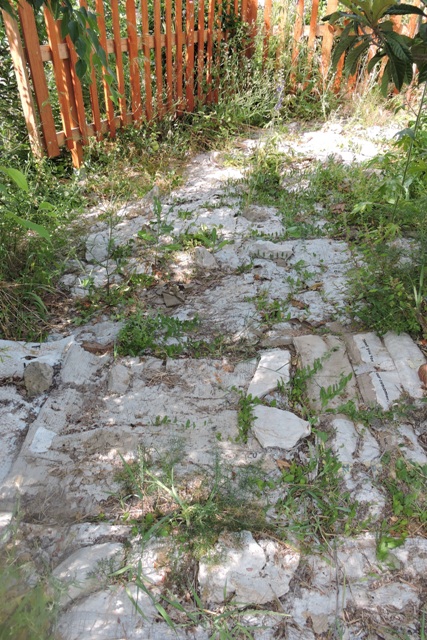
For the last three or so years I have followed a “no dig” regime in the orchards. Cutting the heads off weeds and leaving them on the surface of the soil.
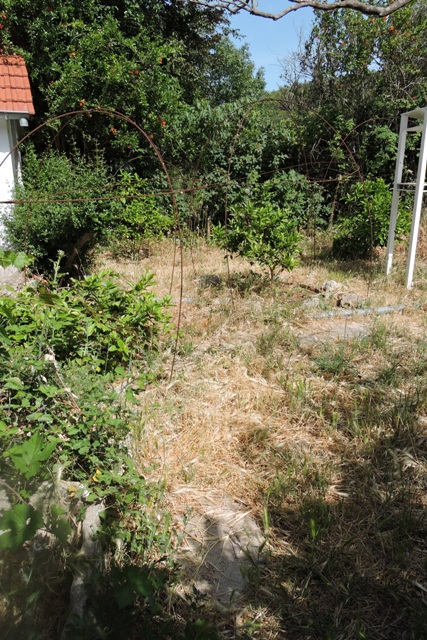
This hasn’t worked, because more weeds just grow up from underneath. These weeds are the ones with the very long tap roots, which can reach deep into the soils and underlying rocks to find moisture.
Many Adriatic island plants (aka weeds) have developed strategies to survive the long hot and very dry summers. This often includes a very long, thick tap root that strongly resists being pulled or dug out and breaks easily, growing again from every break.
These are nightmare plants to eradicate because they outcompete almost everything. Their survival strategies ensure their survival.
Some locals do take care and great pride in their land. Not a leaf out of place and no unwanted plants to be found.
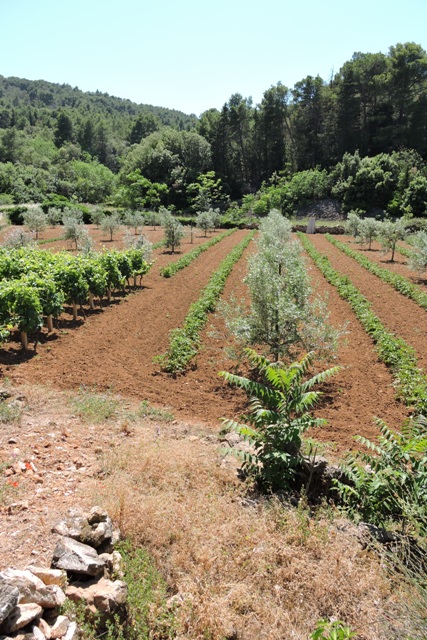
The corollary to that is my immediate neighbouring plot.
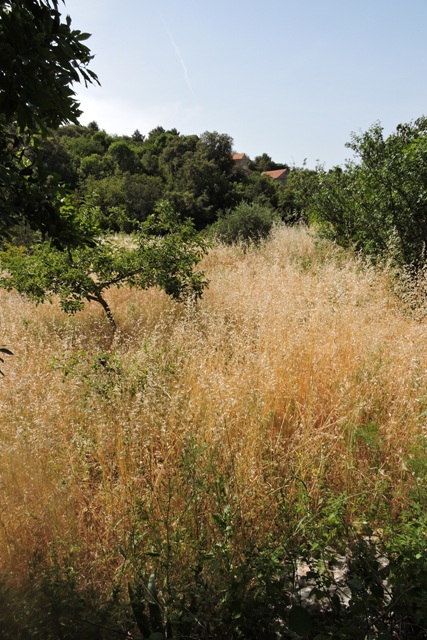
All those seeds will soon be blowing in the direction of my orchard. No wonder I have problems with weeds and grass!
The thing is that “no-dig” doesn’t just mean not digging!
Once again there is the difficulty in getting things you need here on the island. There is no shortage of on-line advice about how to implement a no dig policy. It all starts with biomass.
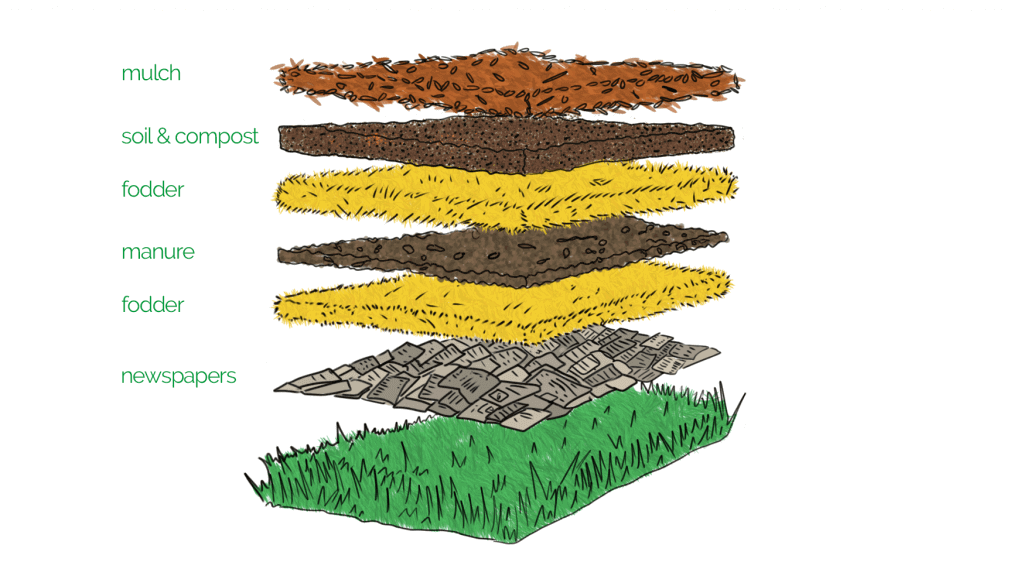
Layers of biomass are added on top of the ground. Over time this layer reduces the ability of seeds in the soil seed bank to germinate, improves the structure of the soil, increases the soil microbiome and helps the plants you want to grow to thrive.
I’ve almost run out of cardboard boxes now. These mainly came in the container from Abu Dhabi.
There are no cattle on the island, so good-old farm yard manure is not a readily available resource.
In other countries the creation of biomass is an industry in its own right. But you need the right products to be available to make it.
This year I have been unable to find anyone selling even a single bale of straw to go round my strawberries.
I have a compost bin and compost everything I can, but it does not produce enough usable compost in a year to do more than dress the surface in a few spots.
Meanwhile my weeds continue to grow…..
Opening the box
I have agonised over what I should do.
My soils are extremely poor, with little to no organic matter and made up of around ⅓ or more, by volume, of rocks.
I have a mulching machine, but it needs a very large quantity of material to mulch, to produce a reasonable quantity of chippings to put on the soil.
In the spring I added around 5cm of mulch to the new flower border. It has worked, but only up to a point. There are still some of the annual and perennial noxious weeds growing through, like the awful Pellitory of the Wall.
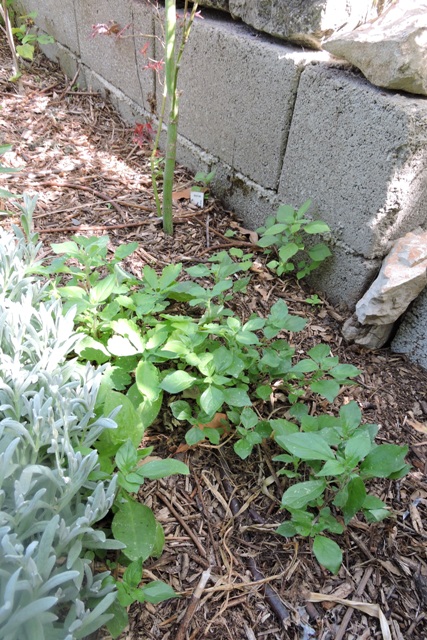
The area I am working with is beyond the size of an average European garden, so it is commercial, even if I don’t consider my activities to be Commercial.
One website offers vast amounts of advice for commercial no-dig horticulture, but I fall at the very first hurdle. That is not being able to get any, let alone anything like enough biomass.
One piece of their advice is to make paths, wide enough for wheelbarrows, of ramial wood fibre, 10 cm higher than the surrounding beds.
I had to look up what “Ramial fibre” was. It is the chipped small branches and leaves of deciduous trees.
In this Mediterranean climate almost all local trees are pines or evergreen oaks.
When I saw an advertisement for a mini tiller, or power hoe, I began to look into what these new machines are and do.
Hoeing a heavy clay soil is hard work at the best of times and near impossible when the surface has been baked as hard as concrete, as it is at the moment.
These 50 cc two stroke petrol engines, power small tines which scratch the surface, digging just a couple of centimetres deep. So after much thought and soul searching I’ve bought one.
I know, it’s another machine, but I need to try and get biomass into the top of the soil.
A neighbour received an EU grant to buy a new rotavator, costing €15,000. That was just for the basic machine (with a reverse gear) but without extras like wheels and a plough.
I have a big 7hp rotavator, which has not been used for probably five years, that cost about €800, and it has a plough attachment that I have never even fitted.
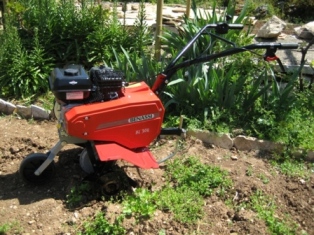
My new machine cost me just over €130, so I know I am only getting what I have paid for. The post office delivered the box this week, all made in China of course.

The instructions, whilst in English, are rather basic and it took a little while to actually put it all together. There was no mention of connecting the throttle to the carburettor. Fortunately there is a complete toolkit and I soon sorted out the connections.
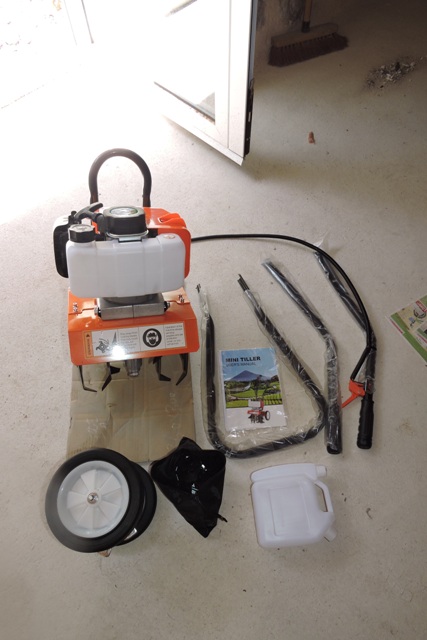
So I am not completely abandoning no-dig gardening, and I’m definitely continuing with all the organic growing principles of no insecticides and herbicides. However I am going to try something else to solve my problem with weeds.
My mini tiller is more like a powered Grelinette, for very shallow cultivation and to break up the soil surface, and at the same time to incorporate biomass into the soil.
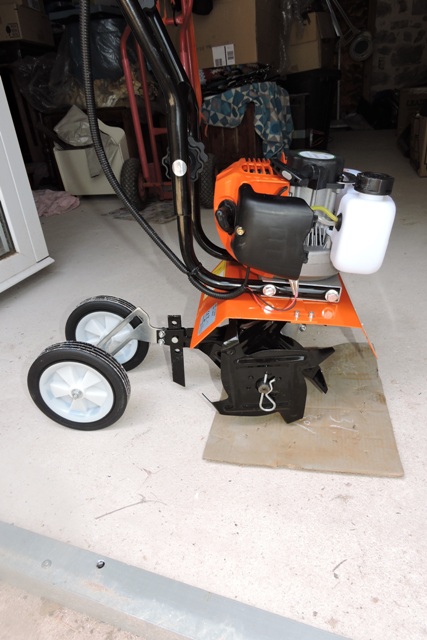
I am going in various places, from ‘no-dig’ to bare minimum tillage. I’ll report progress in due course.
Ground cover
Yes, most of my orchards have ground cover; Grass, thistles, Pellitory of the Wall, trefoils, Convolvulus and other assorted weeds. In some places there are some old carboard boxes.
Where I have laid cardboard, it has worked, except that certain plants like the Convolvulus grows underneath until it finds a gap and then appears. Certainly Convolvulus has nice flowers, but that is the only positive thing I can say about it.
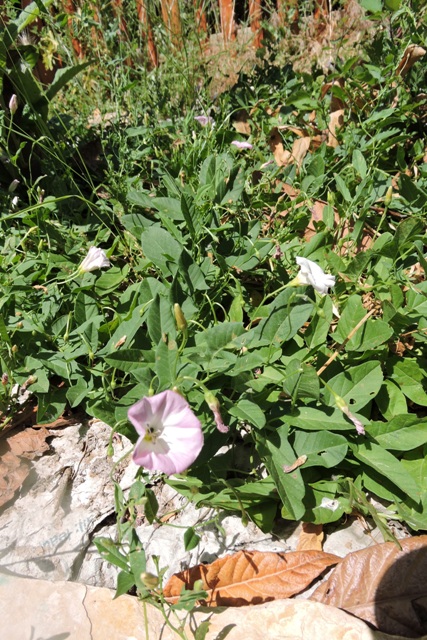
I have experimented repeatedly with different green manure crops in various parts of the orchards. My only success has been with a row of Lucerne that I planted in 2016.
It has grown repeatedly and only in the last really dry years have any weeds grown between the Lucerne plants.
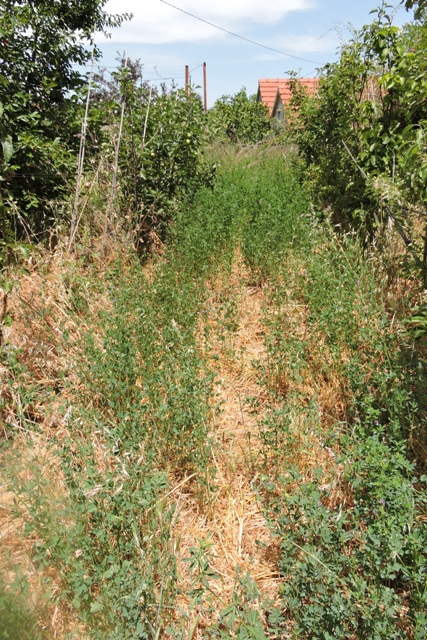
I have tried planting more, but have had no success in getting it to germinate in sufficient quantities to make any difference.
Another plant which throttles the life out of everything else is Sage. It thrives on neglect and rather like Topsy just grows and grows.
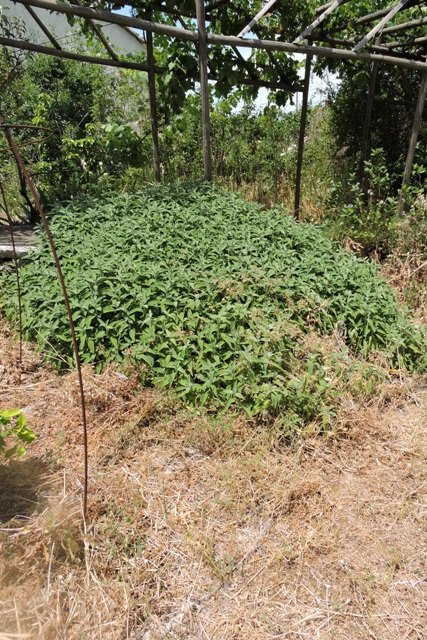
Smelling very nice, I have wondered about propagating a lot of cuttings and then planting them between the citrus trees to eradicate everything underneath.
There must be a Mediterranean solution to preventing weed growth, however I’m still looking for it. Regular Green Manure like Clover doesn’t grow well because of the dry conditions.
When I had a soil thermometer connected to my weather station, the summer soil temperature, in direct sunlight at a depth of 5cm, was often over +40ºC.
Little wonder that the surface is baked as hard as concrete and that there are no worms.
One thing I don’t do though is to give up.
This week’s harvest
This is the season when fruit starts to ripen and needs picking.
Way back in early December my Loquat trees flowered.
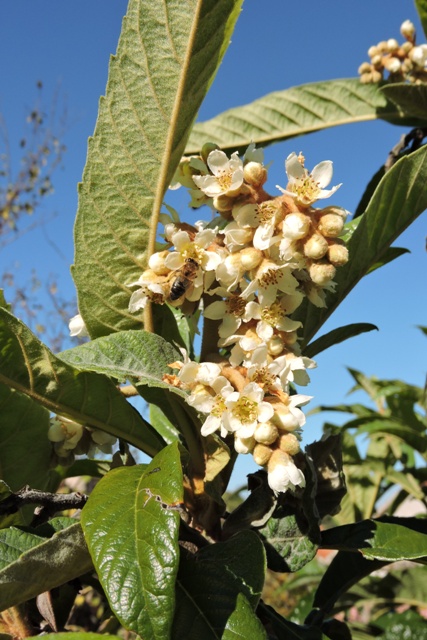
This is an evergreen tree which originated in China some 1,000 years ago but they have been recorded as being grown in Europe since the 16th century.
Known as “Nispero” in Spain, Italy and Croatia, they are called Loquats in English, Eriobotrya japonica.
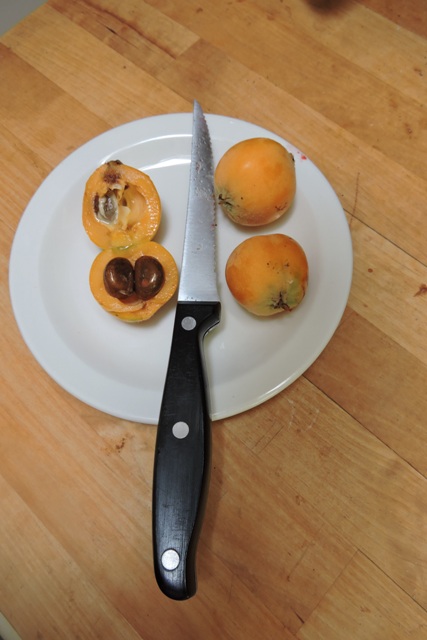
The fruits are the size of plums and are extremely juicy. Once open, there are three to five large, hard seeds inside which have to be removed.
The fruits have a flavour of pineapple and lemon, being sweet but with a background acid taste, so they are very refreshing.
Although there ware lots of flowers last year, not all the fruits have set, so I have enough for my own use, but only just.
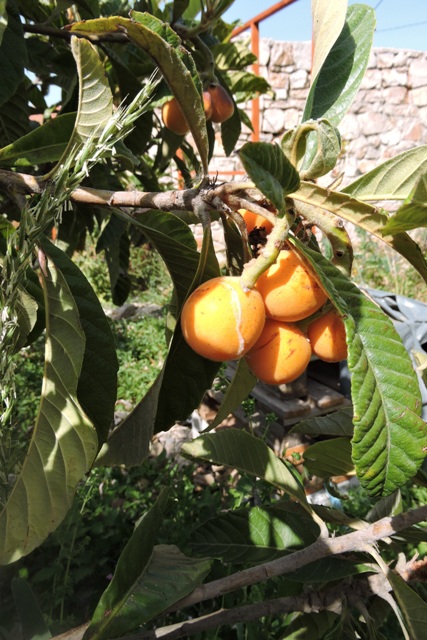
I have also been picking cherries this week.
The Apricots are almost ready for picking, as well as the yellow plums.
This month is going to be busy I think. NCG
2 Responses
Marcy
Loving the pictures. So exciting to see the flowers. I found that the white vinegar and salt recipe for eliminating weeds works really well and does not damage the soil. The recipe is on the internet. Your kitty looked really beat up. Hope he’s doing better. It’s finally summer here and warming up. Ready for flowers and grass to mow. Hope you have a good week.
Kenneth Clark
Interesting as usual, Norman. Do you have Kumquats? They are more for being ornamental than the fruit and do have them in Greece